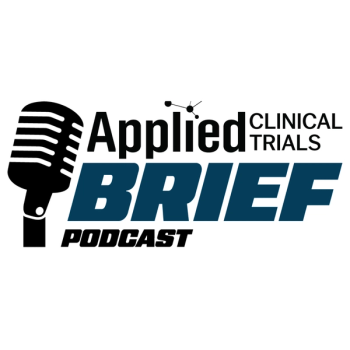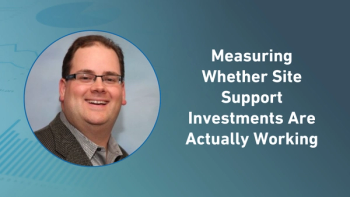
2025 SCRS Global Site Solutions Summit: How Sponsors and CROs Can Streamline Feasibility to Support Sites
Discover how reducing redundancy in feasibility processes and leveraging shared databases can improve collaboration and ease site burden.
In a video interview on-site with Applied Clinical Trials at the 2025 SCRS Global Site Solutions Summit, Christine Senn, PhD, SVP, site-sponsor innovation, Advarra, discussed inefficiencies in clinical research collaboration, particularly the redundancy caused by sponsors' lack of awareness that contract research organizations (CROs) send out multiple preliminary feasibility questionnaires to sites. She suggested that sponsors and CROs should maintain databases on each site to pre-populate feasibility forms, reducing the need for repeated updates by sites. Senn also proposed leveraging technology to centralize site information but noted the challenge of determining who should manage this data. Overall, she advocated for a more straightforward approach where sponsors and CROs collectively maintain and update site data for feasibility forms.
ACT: What are the most effective ways sponsors and CROs can reduce redundancy in feasibility processes to improve collaboration with research sites?
Senn: Collaboration with sites, I think, could really be helped in a lot of ways, if people realized where the redundancies lie. I'm not always sure that that's aware. I was in a panel earlier today, listening to the panel, and they were talking that sometimes sponsors don't even know that CROs send out preliminary feasibility questionnaires to the sites, so sites are doing these multiple times—maybe for the same trial with three or four different CRO possibilities—as they're trying to get the job, and sponsors aren't even aware of that one. I'm not really sure how to cut that out, but I think that there's an opportunity there. Also, I think every sponsor should have a database, and CRO should have a database on each site, if at all possible, and then that would feed into a feasibility form, so that it's a pre-populated feasibility form, and the site, when they get one, would just have the opportunity to go in and correct whatever needs to be corrected, whether it's updating that they have no equipment, or they've added another site, or that whatever they want to add. I think there's an opportunity too, for technology on this one, that there could be a place where it's housed—all this site information would just be housed—and the site would have the opportunity to go in. An attempt was made at this before, but there is an opportunity for that to work, that it houses all the site information, but who manages it? It's like a whole different company. I think easier, and very implementable is that every sponsor and CRO has all this data on the sites, and it feeds into the feasibility form.
Newsletter
Stay current in clinical research with Applied Clinical Trials, providing expert insights, regulatory updates, and practical strategies for successful clinical trial design and execution.




